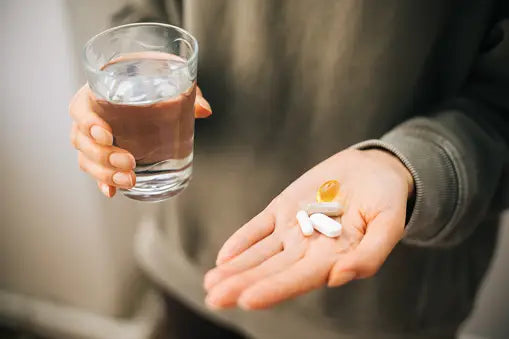

Green Tea Anti-Catabolic?
Table of Contents
Green Tea Anti-Catabolic?
Green tea is made from the dried leaves of the Camellia Sinensis plant. Compared to black tea and oolong tea, green tea contains the highest amount of green tea catechins, the major polyphenols in green tea that constitutes about 35% of its total dry weight. A 2-gram bag of green tea contains about 500 mg of green tea catechins. The most abundant green tea catechins are (−)-epigallocatechin gallate (EGCG), which accounts for about 68–69% of green tea catechins. The anti-obesity potential of green tea catechins, particularly EGCG, has been shown in cell culture, animal and human studies. In studies, patients experienced a very moderate, but very common fat loss of 3 to 5 pounds. It’s nothing monumental, but certainly every bodybuilder would welcome a loss of 3 to 5 pounds of fat! In addition to green tea’s potent health benefits, green tea also contains potent muscle enhancing effects as well.

Green tea does contain anti-oxidants which can be invaluable to the bodybuilder. After intense resistance exercise, muscle fibers are damaged at the molecular level, causing free radical production. Drinking green tea can help you recover faster from your workout, and will slightly lessen your chances of developing cancer. Green tea has been shown to suppress inflammation which can negatively affect muscle growth and also a previous study has shown that green tea extract also has the ability to suppress cortisol, but green tea extract may also be good for older adults according to the latest research.
 Aging exacerbates muscle loss and slows the recovery of muscle mass and function after disuse. Researchers investigated the potential that epigallocatechin-3-gallate (EGCG), an abundant catechin in green tea, would promote prevent cell damage and promote skeletal muscle recovery in muscles of rats. The rats received either EGCG(50 mg/kg body weight), or water daily by gavage. The rats were immobilized and the researchers wanted to examine if green tea extract could prevent muscle atrophy from taking place. For the first two weeks the rats’ hind leg was immobilized with a splint, as a result of which the muscles in that leg atrophied. For the last two weeks of the experiment the researchers removed the splint so that the muscles could recover. The human equivalent of the dose they used would be 600-800 g green tea extract per day. Animals that received EGCG had a 14% greater leg muscle weight as compared to the animals treated with the control over this same period. Muscle fiber area was greater after recovery in EGCG vs. control treated animals. Compared to control treatment, the cell damage was lower in EGCG treated muscles after recovery. While EGCG did not prevent unloading-induced atrophy, it improved muscle recovery after the atrophic stimulus in fast twitch muscles. However, this effect was muscle specific because EGCG had no major impact in reversing muscle atrophy in the slow twitch muscle of old rats. This study is particularly interesting to the aging bodybuilder because with age, their is a loss of fast twitch muscle fibers and green tea improved muscle recovery of the muscle fibers. Aging exacerbates muscle loss and slows the recovery of muscle mass and function after disuse. Researchers investigated the potential that epigallocatechin-3-gallate (EGCG), an abundant catechin in green tea, would promote prevent cell damage and promote skeletal muscle recovery in muscles of rats. The rats received either EGCG(50 mg/kg body weight), or water daily by gavage. The rats were immobilized and the researchers wanted to examine if green tea extract could prevent muscle atrophy from taking place. For the first two weeks the rats’ hind leg was immobilized with a splint, as a result of which the muscles in that leg atrophied. For the last two weeks of the experiment the researchers removed the splint so that the muscles could recover. The human equivalent of the dose they used would be 600-800 g green tea extract per day. Animals that received EGCG had a 14% greater leg muscle weight as compared to the animals treated with the control over this same period. Muscle fiber area was greater after recovery in EGCG vs. control treated animals. Compared to control treatment, the cell damage was lower in EGCG treated muscles after recovery. While EGCG did not prevent unloading-induced atrophy, it improved muscle recovery after the atrophic stimulus in fast twitch muscles. However, this effect was muscle specific because EGCG had no major impact in reversing muscle atrophy in the slow twitch muscle of old rats. This study is particularly interesting to the aging bodybuilder because with age, their is a loss of fast twitch muscle fibers and green tea improved muscle recovery of the muscle fibers. |
Alway SE, Bennett BT, Wilson JC, Edens NK, Pereira SL. Epigallocatechin-3-gallate improves plantaris muscle recovery after disuse in aged rats. Exp Gerontol. 2014 Feb;50:82-94. doi: 10.1016/j.exger.2013.11.011. Epub 2013 Dec 3.

















